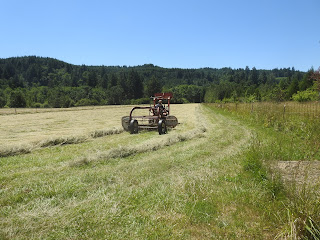Our Christmas decor llama got tired of spending the rest of the year in a box in the attic. So I began dressing him in holiday clothes for subsequent months, with help from friend Claudia who made most of the blankets and friend Carol who added hats and shamrocks and an Easter basket. But what started out to be a holiday per month llama has morphed into a llama that changes clothes more often than once a month.
To review, our Christmas decor llama kept his Christmas decor through January this year... brightly lit on dark winter evenings...
And then became a Valentine's Day llama in February...
A St. Patrick's Day llama in March...
An Easter llama in April...
And a Mother's Day llama in May...
But that's when things began to get out of hand... I started commemorating birthdays of kids who come here with their moms to get milk... (The child's name appears on the sign below "Happy Birthday")...
I couldn't then go back to "Mother's Day", since it was past, so I created a Spring time Llama with tulips...
June was scheduled to be a Father's Day llama but Father's Day was rather late in the month and it was too hot for tulips anymore, so I went back to roses since June is rose month in Oregon...
However, I got very tired of continually refreshing the rose bouquet from my own roses before it was time for Father's Day... Carol and I gathered up father toys and tools to fill the llama's packsaddle...
Johnny posed with his new chainsaw on Father's Day morning...
June is also LGBTQ Pride Month and it occurred to me that I could create a Pride Llama in honor of our many friends and relatives who identify somewhere along that spectrum... Friend Barb made this blanket...
And that is the first half of 2021, lawn llama style. The second half is looking to be just as much fun and just as colorful. Stay tuned!













































